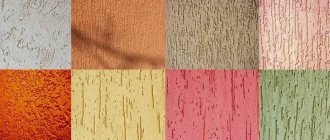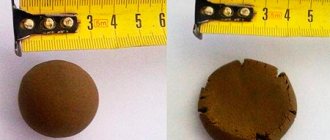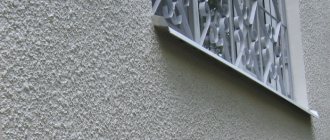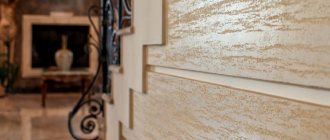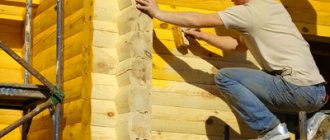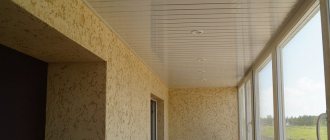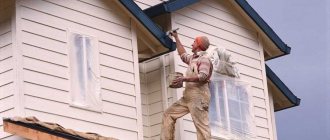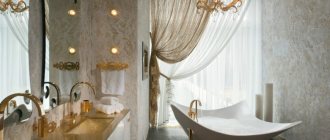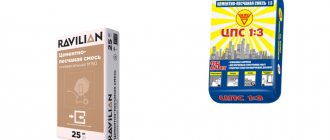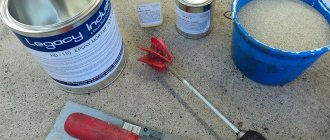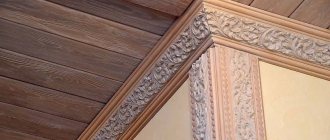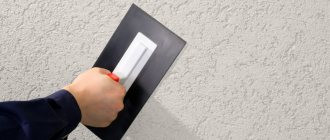Types of plaster
Basically, the classification of plaster mortars is made according to the type of binder used. Four types of this material are used for finishing facades:
- cement;
- silicate , also known as liquid glass;
- acrylic;
- silicone.
Types of facade plaster Source pt.decorexpro.com
Cement plasters
It is clear that the composition of these plaster mixtures includes Portland cement and fractionated sand. It is very important that such plaster solutions do not quickly release moisture. So that it does not go into the material from which the wall of the house is built. That is, when drying quickly, cement plaster begins to crack. Therefore, moisture-retaining substances are added to the composition.
In addition to them, additional plasticizers and modifiers are added, which increase the technical and operational characteristics of the mixture. Typically, the cement variety belongs to the category of textured plasters. Therefore, coarse fillers must be added to the composition. For example, pebbles from crushing granite are added to the “bark beetle” plaster. Their size varies between 0.5-3 mm. By the way, the fraction of the stone must be indicated in large numbers on the paper bag. It is by this parameter that the texture of the finish is chosen.
Dry mixture of cement plaster Source mdv63.ru
The process of finishing the facade of a house with bark beetle plaster is no different from ordinary mortar. It is pulled by the rule, aligned with the beacons. In this case, the pebbles roll under the tension of the tool, forming grooves that are very similar to grooves in wood eaten by a beetle.
Cement plasters have many advantages:
- high strength characteristics;
- cement mortar is a “ breathable ” material, therefore it does not have any effect on the vapor permeability indicator;
- environmentally material ;
- after drying, it is a gray finish that can be painted well with any type of paint;
- Compared to other types of plaster mixtures, cement has the lowest price ;
- easily fits on wall materials of any type; if application to a heat-insulating layer is required, then a reinforcing mesh is laid on top of the latter.
It is painting that increases the budget for using cement mortar.
It should be noted that manufacturers offer dry mixtures of this type of facade plaster. The packaging describes exactly how to prepare the solution. You cannot deviate from the manufacturers' recommendations. Otherwise, there is no guarantee of the quality of the final result.
Applying cement plaster to the facade of a house Source pinterest.com
Silicate plaster
This type of decorative plaster for the facade of a house, like the previous one, belongs to the “mineral” category. Only liquid potassium or sodium glass is used here as a binder. Everything else is exactly the same.
The only thing that must be noted is the fact that silicate plasters are sold ready-made in plastic buckets. That is, you will not find it in dry form. Therefore, manufacturers try to prepare solutions, as they say, in full combat readiness. That is, pigments are immediately added to them. Therefore, the finish turns out to be colored throughout its entire body.
Now about the benefits:
- easily tolerates high and low temperatures ;
- 100% waterproof ;
- good thermal insulation qualities;
- it is a “ breathable ” material;
- excellent adhesive properties , even applied to insulation materials without forming a reinforcing frame.
Silicate plaster Source hsbaustoffe.de
But this material also has its disadvantages:
- if moisture gets on a wall finished with silicate plaster, it will change its color , usually darkening;
- the finished solution applied to the surface of the wall hardens quickly , so when carrying out finishing work you will have to move more quickly;
- Before finishing, wall surfaces must be primed , preferably with a silicate primer;
- the price is higher than that of cement.
The technology for applying it to walls is standard: it can be done manually, or by machine. Apply the solution in a thin layer not exceeding 2 cm.
Facade wall covered with silicate bark beetle plaster Source pinterest.com
See also: Catalog of companies that specialize in finishing materials.
Decorative plasters based on acrylic
The fillers are the same. Binder is an aqueous dispersion of acrylic resins. This material is the main glue of PVC. Anyone who has encountered this type of adhesive knows well how elastic it is. The same quality is transferred to acrylic plasters. It allows façade walls to avoid cracking when temperature loads change. In this case, the solution is applied in a thin layer.
Like silicone varieties, acrylic goes on sale in finished form. Manufacturers today offer a fairly wide range of materials, the types of which can be used for finishing in different operating conditions of buildings and structures. For example, in coastal areas where humidity is high, solutions are used specifically for wet operating conditions. There are plasters for regions with a lot of sunny days, for areas where there is maximum dust formation or sudden temperature changes. That is, it is necessary to select plaster according to this principle.
Acrylic plaster “Fur coat” Source brickpark.ru
Now about the advantages:
- have high strength , easily withstand even impacts:
- the finishing does not collect dust in large quantities;
- easy to clean with water pressure;
- one hundred percent moisture resistance ;
- cheaper than silicate and silicone mixtures;
- good adhesion characteristics to almost all building materials;
- The applied plaster layer can be painted .
And the cons:
- low vapor permeability ;
- fades over time in the sun.
It should be added that manufacturers offer two types of acrylic plasters: for repairing facades and for finishing. The first is used to seal cracks, crevices and recesses. The second is for finishing. Almost all experts agree that exterior finishing of a house with this type of plaster is the best.
Stage No. 3. Reinforcement
After the plaster layer has dried and gained strength, the team begins to reinforce the facade. The reinforcement is a 3-layer cake consisting of a plaster-adhesive mixture in the thickness of which a fiberglass mesh is laid. Reinforcement includes the following operations:
- - priming before reinforcement,
- - applying the 1st layer of plaster-adhesive mixture,
- - laying fiberglass mesh,
- - applying the 2nd layer of plaster-adhesive mixture.
The reinforcement prevents the appearance of surface cracks during operation.
Unscrupulous builders save money and ignore the reinforcement operation, which as a result leads to a significant reduction in the service life of the facade, surface cracks on which appear already in the first year of operation. We have been using plaster and adhesive mixtures for many years: Knauf Sevener, Tex-Color 1000 R, Osnovit Kaverplix TS117, Ceresit Thermo Universal. We recommend using fiberglass mesh with a density of 150 g/m2 and higher.
Types of textures
It should be noted that all the plaster solutions presented above form the same textures on the facade walls of the house. Namely:
- Fur coat . This textured finish is independent of the mortar content. The method of application is important here. Therefore, to form a fur coat, they try to use plaster mixtures that contain fine fillers.
- Bark beetle . This type of finishing, on the contrary, depends on the fractionation of fillers. The larger the granules present in the material, the more clearly the texture and intensity of the relief is formed.
- Lamb . This mixture also contains fillers, but not just one fraction, but several. Therefore, a lumpy surface forms on the wall, reminiscent of curls on a sheep’s wool.
- Cereal or pebble plaster . The composition includes pebbles of the same large sizes. This plaster forms a finely lumpy surface.
- Mosaic, also known as plaster with crumbs of decorative stone . Included in the group of silicone or acrylic types. For this purpose, transparent resins and stone chips are used. Essentially, a rock ripple is formed on the wall.
Varieties of textures of facade plasters Source nashaotdelka.ru
Cost of façade finishing work
The plaster of the façade is assessed depending on the number of decorative components and the height of the building itself. For example, the price of finishing a façade with “Bark Beetle” plaster, together with wall insulation work, costs on average one and a half thousand rubles per square meter.
Rules for applying decorative plaster
There are no special requirements for plastering. Apply the prepared solution with a wide spatula to the wall surface in the required layer. The main thing is to do the finishing not by square meters, but by the whole wall. This way the finish will be smooth and uniform over the entire applied surface. That is, you cannot plaster part of the wall and fill the other part the next day. The junction of the two laid materials will be clearly visible.
If the walls of the house are insulated with polystyrene foam or mineral wool boards, then it is better to apply the plaster on a reinforcing mesh. Many people make the mistake of first laying the mesh and then coating it with adhesive on top. You need to do it the other way around: first glue, then the mesh, which is embedded in the composition.
If you decide to plaster wooden walls, then first of all the wood must be protected from moisture, because it is a hygroscopic material and quickly absorbs it. And for plaster this is a guarantee of cracks.
Stage No. 1. Preparation
At the stage of preparing the surface for subsequent finishing, the following operations must be performed:
- visual and instrumental inspection, identification of defective areas (voids, peeling, peeling, etc.),
- repair of defective areas,
- cleaning from contaminants,
- application of adhesive composition (priming).
Deep penetration façade primer is well suited for priming: Ceresit CT17, Osnovit Unkont, Knauf Tiefengrund. If we are dealing with concrete, it is necessary to use primers with quartz sand or concrete contact.
Consumption of plaster mixtures
Experienced builders definitely pay attention to this parameter. After all, the amount of material purchased depends on it. On the packaging, manufacturers must indicate the material consumption in the form of a fork of two numbers. The spread is sometimes quite large. This depends on the quality of the finished base, its evenness, and the fraction of fillers.
- Mineral – 2.5-4 kg/m².
- Acrylic – 1.5-3 kg/m².
- Silicone - 2.5-3 kg/m².
The manufacturer must indicate the material consumption on the packaging Source stroimdom.com.ua
Installation of an insulation system in the basement of the house
If the facade plaster system is installed in the basement of the building, it is necessary to take into account some features:
- Before carrying out work, thoroughly waterproof the basement of the walls and the blind area;
- the insulation must have a low level of moisture permeability;
- Reinforcement should be done in two layers;
- For façade cladding, you can use mosaic plaster, ceramic tiles, artificial or natural stone.
How to determine the required thickness of insulation
For each region, the standard heat transfer resistance that the wall structure must have is determined. Its meaning is in the normative literature. You can determine the value from the schematic map. Knowing (in addition to this parameter) the material and thickness of the wall, materials and thickness of the interior decoration, you can use the calculator provided in the file raschet_teploizolacii to calculate the thickness of the insulation (file taken from the site: https://buildingbook.ru/reschetuteplsteni.html).
By entering the necessary parameters into the calculator, you will get the value of the insulating layer. All that remains is to increase it to the nearest value of the thickness of the sheet insulation. (Negative values indicate that insulation is not needed).
Video on wet plaster facade technology from one of the well-known manufacturers of insulation systems.
Installing wet plaster does not require expensive equipment or unavailable materials. The operations performed when creating a wet facade are not complicated in themselves. The main thing that is required is strict adherence to technology and high-quality materials.
Features and Specifications
A large private home needs beautiful, affordable, environmentally friendly and protective design. Decorative facade plaster meets these requirements. This coating can be applied without special application skills, you just need to adhere to the technology.
There are a number of features of finishing the facade with decorative plaster:
- thanks to UV protection, the paint does not fade longer and retains its attractive appearance;
- the material is resistant to temperature changes, is not afraid of severe frosts, and tolerates humid and hot climates;
- facade plaster does not deteriorate and does not change its properties from rain, snow, wind;
- the finishing material has good ventilation properties and allows the entire house to “breathe”;
- does not have harmful impurities, so the plaster is safe for human health;
- the solution can be applied to any wall material - concrete, stone, cement, drywall or over other plaster;
- plastered walls can be easily repainted in different colors, combine shades, and combine them with each other;
- By changing the method of application, you can achieve different textures and reliefs.
Required Tool
To make it more convenient and easier to work, the tool is taken care of in advance. You will need to perform several types of work, not just plastering itself, so the set of tools is varied.
Mechanical means:
- Electric drill (screwdriver);
- hammer drill (prepare an attachment for installing dowels);
- construction mixer;
- cutter for cutting profiles.
Hand tools and equipment:
- spatulas with a blade width of 350 and 80-100 mm;
- serrated stainless steel trowel with teeth 8-10 mm;
- hammer;
- building level;
- ironer;
- a grater equipped with sandpaper or an abrasive mesh;
- roller, wide brush (for priming);
- grater;
- grater for forming a decorative structure (300-400 mm long);
- construction knife for cutting reinforcing mesh sheets;
- container for adhesive mixture;
- masking tape;
- nylon cord;
- clean rags.
Those who use sheet polystyrene foam will find a home-made device for cutting sheets according to thickness useful. A homemade bow saw (“goat”) is made from wooden slats. A nichrome thread with a diameter of 1.0 mm is used as a cutting “blade” (acceptable limits are 0.8-1.2 mm). Voltage is supplied through a transformer with a power of 250 (up to 400) W, 220/24 V.
